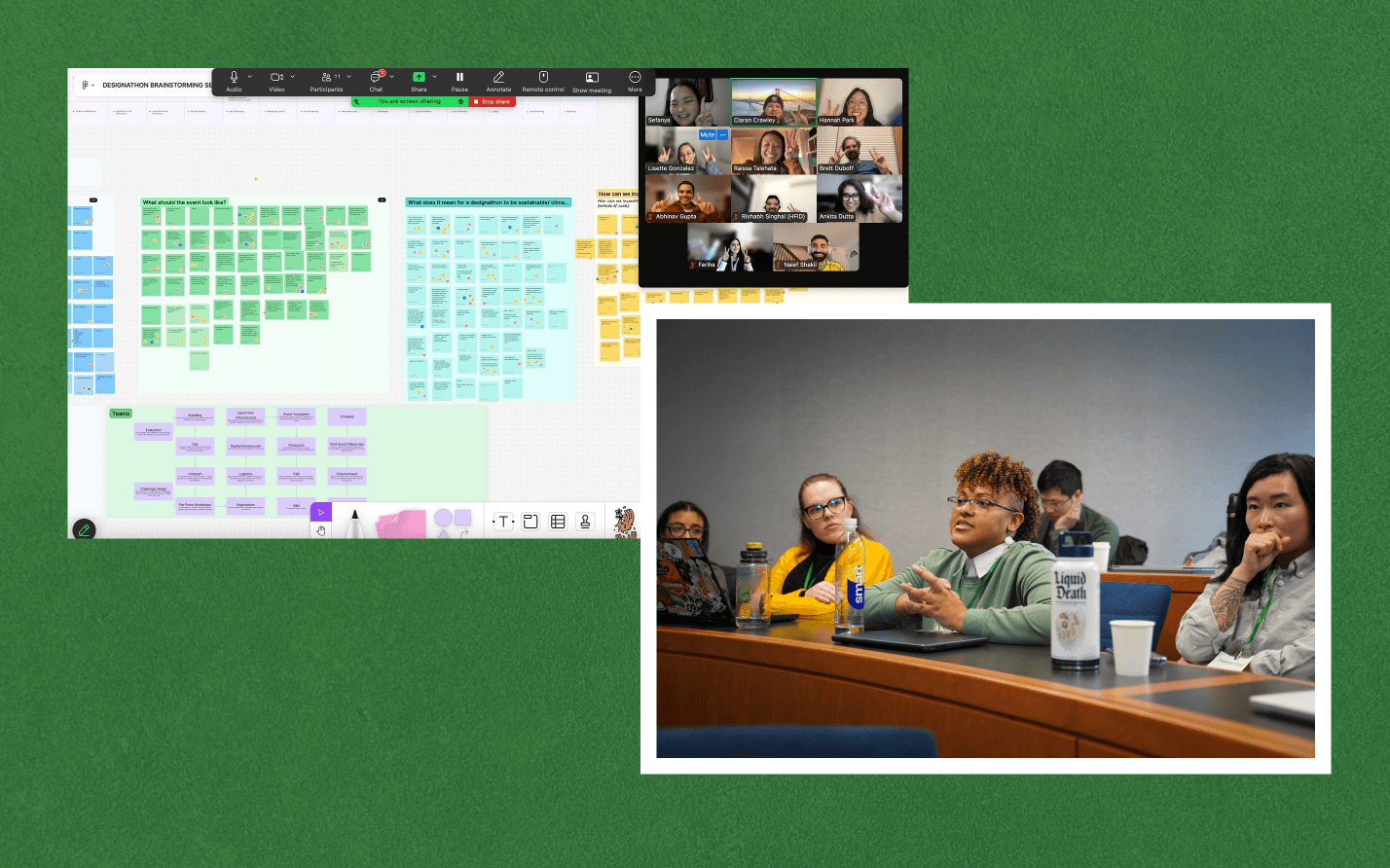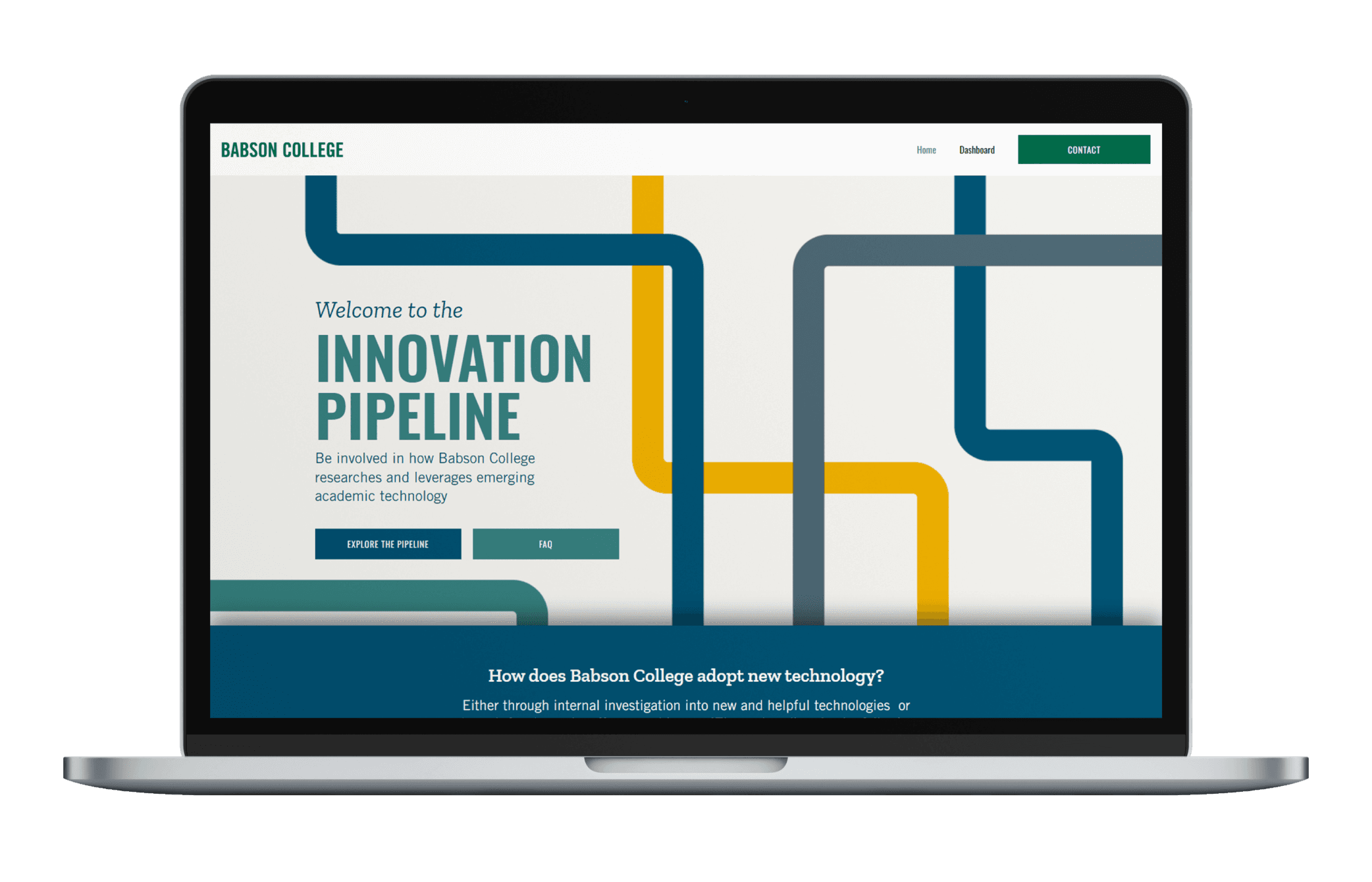Customer Onboarding
Consulting a business client on improving their onboarding experience
This work is confidential- the client's name is removed from this case study. Please reach out if you would like to learn more.
__________________________________________________
As part of a Bentley University graduate course on qualitative research methods, a team of three students and I consulted a SaaS B2B E-commerce client on their interview process and provided insights to improve the client onboarding experience.
Our goal was to understand and pinpoint frictions and opportunities in the customer onboarding journey across 4 integrated e-Commerce platforms to make onboarding smooth, streamlined, and help customers hit the ground running!
Client
SAAS B2B Ecommerce Client
Key Skills and Responsibilities
User Research, Presentation Design, UX Design, Service Design
Team
UX Designer, 2 UX Researchers, Project Manager
Tools
Figjam, Zoom
Research Goals
Understand the frictions and opportunities in the current customer onboarding journey across 4 main integrated e-Commerce platforms
Discover how onboarding is implemented at other B2B SaaS/software companies
Inform areas the company should invest in to ensure smooth, efficient, and frictionless onboarding
Establish baseline to measure onboarding improvements over time
The Challenge
Business Context
The B2B ecommerce tech company specializes in subscription management software that helps merchants create frictionless subscription experiences to grow recurring revenue. While the platform excelled in overall ease of use and customer support quality, onboarding was a significant pain point.
Key Performance Gaps:
Ease of Setup score: 7.1 vs. 8.2 industry average
Overall satisfaction with onboarding rated significantly lower than post-launch experience
Customer feedback indicated the onboarding process was preventing optimal "time to value"
Research Objectives
Understand friction points in the customer onboarding journey across 4 main e-commerce platforms (Shopify, BigCommerce, Salesforce Commerce Cloud, and Magento)
Discover best practices for optimizing onboarding experiences
Inform strategic investment areas for smooth, efficient onboarding
Establish baseline metrics for measuring onboarding improvements over time
Research Methodology
Mixed Methods Approach
The research employed both quantitative and qualitative methods to provide comprehensive insights:
Phase 1: Survey Analysis
Large-scale online survey sent to customers who completed onboarding within the past 3 months
Hybrid of rating scales and open-ended questions
Measured satisfaction and implementation difficulty on 1-5 scales
Phase 2: In-Depth Interviews
16 face-to-face interviews with recent customers
15-30 minute remote sessions via Zoom
Participants included executives, managers, and technical implementers
Sessions were recorded and transcribed with consent
Phase 3: Data Analysis & Synthesis
Individual coding of interviews by research team
Collaborative affinity mapping to identify patterns
Cross-platform analysis to understand platform-specific challenges
Participant Profile
Target Audience: Recent customers who completed implementation within past 3 months
Roles: Decision-makers, implementation managers, senior engineers, technical program managers
Platform Distribution:
Shopify: 50% (8 customers)
Salesforce: 12.5% (2 customers)
Magento: 18.75% (3 customers)
BigCommerce: 25% (4 customers)
Key Findings
Customer Journey Overview
The research revealed a 4-phase onboarding journey with distinct emotional peaks and valleys:
Sales & Initial Contact - High optimism
Kickoff/Introduction - Cautious optimism
Implementation - Mounting frustration
Go Live & Post Launch - Relief and satisfaction
Major Pain Points Identified
1. Gaps in Customer Relationship & Tailored Solutions (62.25% of customers)
The Problem: Customers felt the onboarding experience was impersonal and lacked customized solutions for their specific needs.
Evidence:
"I had to find solutions on message boards, on Reddit. If [the company] has a solution, why were we not given it? We were left on our own to figure it out." - Customer feedback
Customers described relationships as "cold" compared to other SaaS implementations
Communication delays when trying to reach launch teams
Platform Impact: All platforms affected, with highest impact on BigCommerce (75%) and Salesforce (100%)
2. Misaligned Expectations (43.75% of customers)
The Problem: Initial sales conversations set unrealistic expectations about timeline, effort, and product capabilities.
Evidence:
"We were told everything would be plug and play and easy, and we've had to push the migration back a month" - Customer feedback
Promises of enterprise capabilities that required extensive customization
Feature availability misrepresented during sales process
Platform Impact: Particularly acute for Magento (100%) and BigCommerce (50%)
3. Perceived Product Gaps (68.76% of customers)
The Problem: Customers identified missing functionality, particularly around data migration, shipping options, and subscription management flexibility.
Evidence:
Need for automated data migration tools
Missing free shipping options for mixed cart orders
Inability to create multiple subscription orders for the same SKU
Integration gaps with fraud protection tools
Platform Impact: Highest on Shopify (75%) and Magento (100%)
4. Internal Team Coordination Issues (18.75% of customers)
The Problem: Perceived disconnect between internal teams led to inconsistent information and escalation challenges.
Evidence:
"Please make sure the CSM is regularly involved to make sure we can get [the company] to where you need to be" - Customer feedback
Information silos between sales, technical, and support teams
Unclear escalation paths for complex issues
5. Migration Complexity (43.75% of customers)
The Problem: Data migration was more complex and time-consuming than expected, requiring heavy developer involvement.
Evidence:
"The managed migration service we paid for was not actually managed, and our devs needed to be very involved" - Customer feedback
Data format mismatches between platforms
Lack of incremental migration milestones
6. Documentation Issues (25% of customers)
The Problem: Technical documentation was outdated, inaccurate, or insufficiently detailed.
Evidence:
Documentation described as "not helpful" and "wrong"
Over-reliance on wiki references instead of direct support
Lack of detailed migration guidance
Positive Findings
Despite the challenges, customers highlighted several strengths:
Responsive Support: Timely communication from representatives
Comprehensive Documentation: When accurate, documentation was well-structured and digestible
Post-Launch Experience: Strong satisfaction with platform performance after implementation
Design Recommendations
Immediate Actions (Continue Current Strengths)
Maintain Communication Excellence: Continue frequent, timely customer communication to alleviate anxiety around technical implementations
Preserve Documentation Quality: Keep providing thorough, digestible documentation where it's working well
Strategic Improvements (Start Initiatives)
1. Strengthen Holistic Onboarding Experience
Implement response time SLAs across all platforms
Create feedback loops to incorporate customer learnings into documentation updates
Develop customer success milestones and check-in protocols
2. Align Sales and Implementation Expectations
Create realistic timeline estimation tools
Implement regular timeline check-ins with customers
Establish clear handoff protocols between sales and implementation teams
Update customers proactively when red flags arise
3. Address Product Gaps
Assess business impact and technical effort for requested features
Develop customer-facing roadmap sharing process
Prioritize automation for data migration processes
Create platform-specific feature gap analysis
4. Improve Internal Collaboration
Establish cross-team communication protocols
Create escalation path documentation and training
Implement shared customer context systems
Regular cross-team onboarding reviews
5. Optimize Migration Processes
Break large migrations into smaller, incremental milestones
Improve data migration tooling and automation
Create platform-specific migration guides
Set realistic expectations for developer involvement
6. Update Documentation Systems
Implement documentation accuracy review processes
Create detailed, platform-specific guides
Establish feedback loops for documentation improvements
Regular audits of documentation currency
Platform-Specific Prioritization
Based on Revenue Goals:
Shopify (33% revenue target): Focus on recommendations 1, 3, 5
Salesforce (33% revenue target): Address recommendations 1-4
Magento (10% revenue target): Implement recommendations 1, 2, 3, 6
BigCommerce (7% revenue target): Focus on recommendations 1, 2, 5, 6
Success Metrics & Measurement
Primary KPIs
G2 Onboarding Score: Target improvement from 7.1 to 8.0+
Customer Satisfaction: Increase implementation satisfaction scores by 25%
Time to Value: Reduce average onboarding timeline by 30%
Secondary Metrics
Reduction in support tickets during onboarding
Increased customer advocacy scores post-implementation
Improved internal team coordination scores
Impact & Next Steps
Immediate Implementation (0-3 months)
Establish response time SLAs and tracking
Create customer check-in cadence templates
Develop sales-to-implementation handoff documentation
Begin documentation accuracy audit
Medium-term Development (3-9 months)
Build migration automation tools
Implement cross-team communication protocols
Develop customer-facing roadmap process
Create platform-specific onboarding guides
Long-term Strategic Initiatives (9+ months)
Full customer journey optimization
Predictive onboarding timeline tools
Self-service migration capabilities
Comprehensive customer success platform
Research Process Learnings
Future Research Recommendations
Minimize Interviewer Bias: Use UX-experienced interviewers who weren't involved in day-to-day operations
Comprehensive Discovery: Ensure access to all relevant business areas during research planning
Clean Data Collection: Avoid potentially biased data by collecting direct customer feedback without internal commentary
Conclusion
This research revealed that while the B2B ecommerce tech company excels in product functionality and post-launch support, significant opportunities exist to improve the onboarding experience. The findings provide a clear roadmap for addressing the most impactful friction points, with recommendations prioritized by platform revenue goals and customer impact.
By focusing on expectation alignment, internal coordination, and process optimization, the company can transform onboarding from a pain point into a competitive advantage, ultimately improving customer satisfaction and accelerating time to value.
This case study demonstrates the power of mixed-methods user research in identifying systemic experience issues and providing actionable, business-aligned recommendations for improvement.






